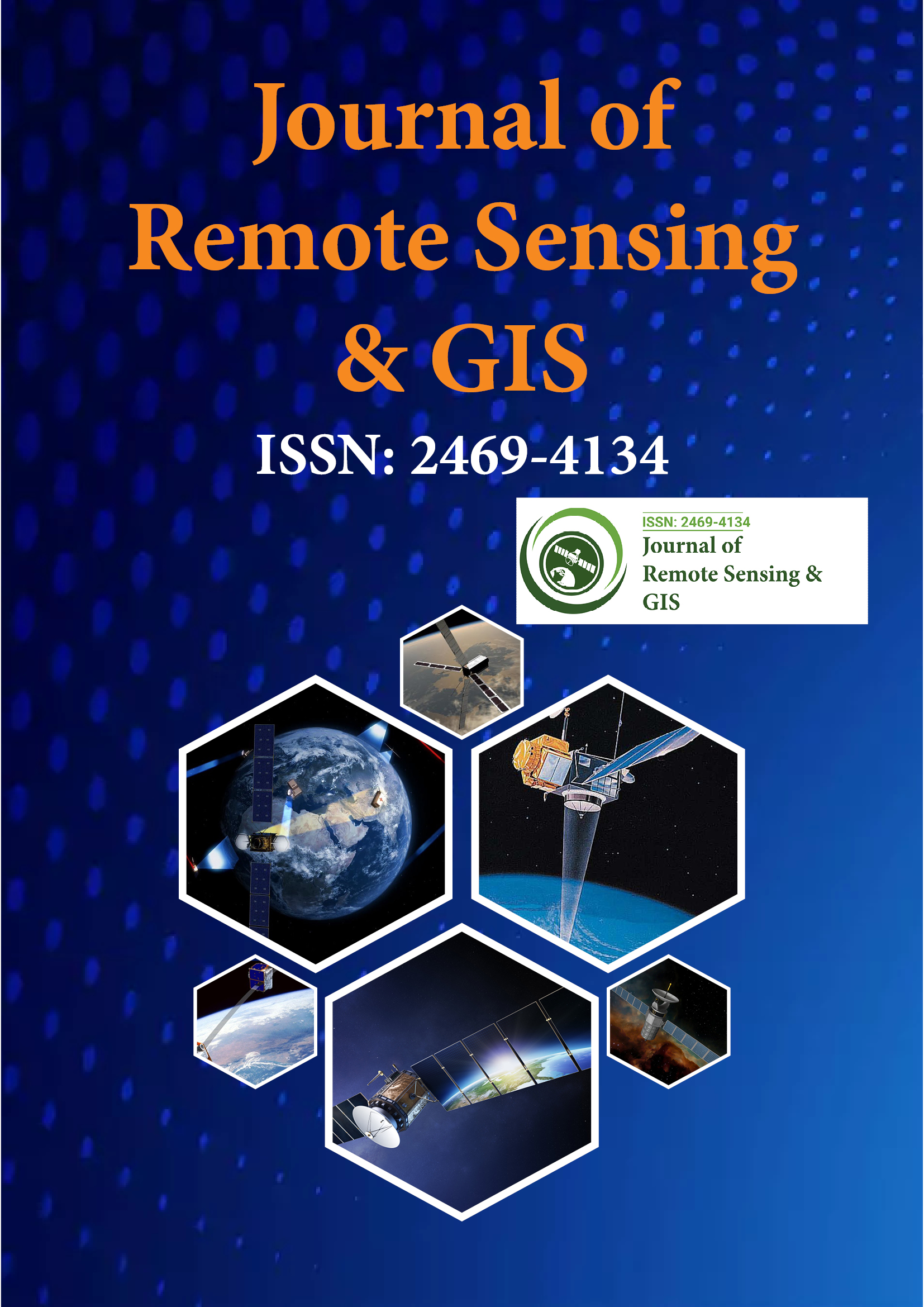Indexed In
- Open J Gate
- RefSeek
- Hamdard University
- EBSCO A-Z
- OCLC- WorldCat
- Publons
- International Scientific Indexing
- Euro Pub
- Google Scholar
Useful Links
Share This Page
Journal Flyer

Open Access Journals
- Agri and Aquaculture
- Biochemistry
- Bioinformatics & Systems Biology
- Business & Management
- Chemistry
- Clinical Sciences
- Engineering
- Food & Nutrition
- General Science
- Genetics & Molecular Biology
- Immunology & Microbiology
- Medical Sciences
- Neuroscience & Psychology
- Nursing & Health Care
- Pharmaceutical Sciences
Commentary - (2025) Volume 14, Issue 3
Advanced Techniques in Geovisualization: Combining Satellite Imagery, Demographics and Infrastructure for Strategic Planning
Lucas Thornton*Received: 29-Aug-2025, Manuscript No. JGRS-25-30282; Editor assigned: 01-Sep-2025, Pre QC No. JGRS-25-30282(PQ); Reviewed: 15-Sep-2025, QC No. JGRS-25-30282; Revised: 22-Sep-2025, Manuscript No. JGRS-25-30282(R); Published: 30-Sep-2025, DOI: 10.35248/2469-4134.25.14.391
Description
Geovisualization provides a dynamic method for representing and analyzing spatial data, offering tools that allow researchers, planners and policymakers to explore patterns, trends and relationships across geographic space. Unlike traditional static maps, geovisualization enables users to interact with data in multiple ways, enhancing comprehension and supporting informed decisions in areas such as urban development, environmental management, disaster preparedness and resource allocation.
One of the main advantages of geovisualization lies in its ability to combine diverse datasets. Satellite imagery, demographic data, land use records, environmental sensor readings and infrastructure maps can be integrated to create multidimensional representations of a region. This integration enables users to observe correlations, detect changes over time and evaluate potential impacts of various interventions. The ability to manipulate data interactively allows for a deeper understanding of complex spatial relationships, making geovisualization an essential tool for planning and analysis.
Three-dimensional representations enhance the understanding of topography, urban structures and coastal features. Elevation, terrain, vegetation and built environments can be visualized together, providing a more complete picture of the landscape. Time-based visualizations allow users to track changes over weeks, months or years, offering insights into trends such as urban expansion, habitat transformation or seasonal environmental changes. Such temporal analysis helps identify areas requiring attention or intervention.
Communication is another area where geovisualization proves valuable. Complex spatial information can be presented through interactive dashboards, story maps and animated sequences, making it easier for decision-makers, stakeholders and the public to comprehend data. This capability is particularly useful in emergency management, where clear visual representation of risk zones, evacuation routes and resource allocation can enhance preparedness and response efficiency.
Advancements in software and computing have made geovisualization tools more accessible. Desktop applications, web-based platforms and mobile devices allow a wide range of users to interact with spatial data. Open-source solutions, in particular, have enabled researchers, educators and community organizations to implement geovisualization techniques without requiring extensive technical knowledge.
Despite these benefits, effective geovisualization requires attention to data quality, resolution and representation. Misrepresentation of scale, improper use of colors or insufficient metadata can lead to misinterpretation. Combining expert knowledge with careful design ensures that visualizations remain accurate, meaningful and actionable.
Geovisualization serves as a comprehensive framework for understanding spatial phenomena, offering tools that enable the visualization, exploration and interpretation of complex geographic data. By integrating various datasets such as satellite imagery, demographic information, environmental measurements and infrastructure data, geovisualization allows for multi-layered analysis that reveals relationships and patterns not easily detectable through traditional methods. This ability to synthesize diverse sources of information provides users with a richer, more nuanced understanding of spatial dynamics, making it an essential tool for both researchers and practitioners.
The interactive capabilities of geovisualization enhance its practical utility. Users can zoom into specific regions, filter datasets, query individual elements and manipulate visual representations in real time. Such interactivity enables detailed investigation of local conditions, identification of trends and comparison of spatial relationships across scales. For example, in environmental monitoring, geovisualization can track deforestation, coastal erosion or water quality variations over time, providing a clear understanding of environmental changes and their potential implications. Similarly, urban planners can use geovisualization to analyze population density, traffic flows and infrastructure distribution, supporting informed decisions regarding development and resource allocation.
Temporal analysis is another vital aspect of geovisualization. By observing how spatial features evolve over days, months or years, users can detect trends, anticipate challenges and evaluate the impact of previous interventions. This longitudinal perspective is particularly valuable in disaster management, climate monitoring and ecosystem management, where understanding the progression of events or environmental changes is critical for effective planning and mitigation.
Beyond research and planning, geovisualization improves communication of complex information. Visual representations, including interactive maps, dashboards and animations, make it easier to convey insights to policymakers, stakeholders and the public. This clarity fosters collaboration and informed discussion, allowing multiple parties to engage meaningfully with spatial data and contribute to decision-making processes.
Technological advancements have expanded the accessibility of geovisualization. Web-based applications, mobile platforms and open-source tools allow a wider range of users to analyze and interpret spatial data without requiring extensive technical expertise. This democratization of spatial analysis enhances its applicability across multiple sectors, from education and community planning to scientific research and environmental management.
In conclusion, geovisualization combines data integration, interactivity, temporal tracking and effective communication to provide a powerful means of analyzing spatial information. Its capacity to reveal patterns, support informed decisions and facilitate collaboration makes it an indispensable resource across research, planning and policy contexts, contributing to better understanding and management of complex spatial systems.
Citation: Thornton L (2025). Advanced Techniques in Geovisualization: Combining Satellite Imagery, Demographics and Infrastructure for Strategic Planning. J Remote Sens GIS. 14:391.
Copyright: © 2025 Thornton L. This is an open-access article distributed under the terms of the Creative Commons Attribution License, which permits unrestricted use, distribution and reproduction in any medium, provided the original author and source are credited.

